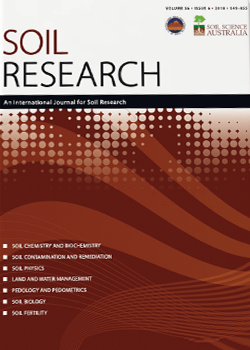
Evidence for soil carbon enhancement through deeper ploughing at pasture renovation on a Typic Fragiaqualf
Year of Publication: 2017
Authors: Calvelo Pereira, R.; Hedley, M. J.; Camps Arbestain, M.; Bishop, P.; Enongene, K. E.; Joseph Otene, I. J.
Abstract
Permanent pastures require periodic renewal (cultivation and resowing) to maintain their productive potential, which involves a short-term carbon (C) loss. Normal cultivation (ploughing or discing) often involves only the top 10–15 cm, or less, of pasture soils. A regrassing field trial with ryegrass plus white clover swards was established in 2011 to assess the effect of deeper ploughing (25 cm) on C storage in an imperfectly drained soil (Tokomaru silt loam). The site was core sampled (0–30 cm depth) 2 and 4 years (i.e. in 2013 and 2015 respectively) after cultivation and regrassing (soil inversion treatment) to assess changes in soil C content at different depths. At both times, an adjacent uncultivated ryegrass paddock (undisturbed pasture treatment) under similar grazing intensity was also sampled and C stocks were compared. Profiles of cultivated soils (soil inversion) showed higher (P < 0.01) C stocks than the adjacent permanent pasture at the nominal 15–25 and 25–30 cm depths and significantly lower (P < 0.01) C stocks in the topsoil (nominal 0–5 cm depth) for both years sampled (2013, 2015). These findings imply that the differences (inversion – pasture) were consistent 4 years after cultivation and deep ploughing at pasture renewal had resulted in an overall increase in soil C mass to approximately 30 cm of ~18% (13.9 Mg C ha–1; equivalent soil mass 3701 Mg soil ha–1) compared with not undertaking the regrassing. This gain in soil C may be temporary, but in a period of 4 years it has significantly increased the net residence time of C in soil related to soil inversion.
Additional keywords: carbon storage in soil, deep ploughing, silt loam soil, soil inversion, soil tillage.
